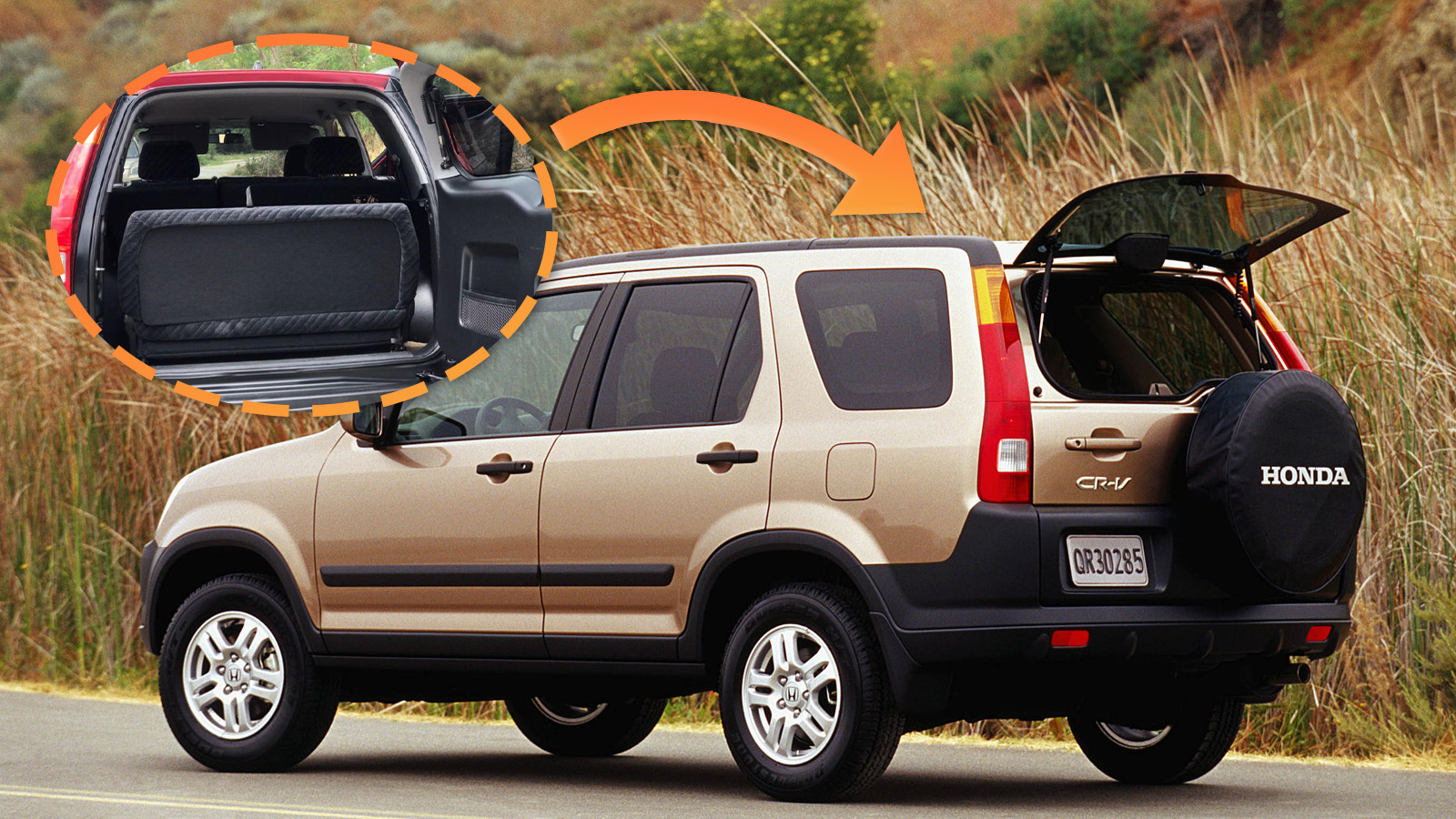

The second-generation Honda CR-V was not a large SUV—certainly not by today’s standards, but not even by the standard of the early 2000s. Americans see a car like that CR-V and think, “five-seater at best.” Honda of the Philippines, though? It recognized potential where nobody else dared, dreaming big to double the CR-V’s seating capacity and sell a 10-passenger model from 2002 to 2005 in a shrewd maneuver of regulatory gamesmanship that paid off in sales, right up until it didn’t.
Little known though it is in the West, the 10-passenger CR-V AUV is no secret in its home market. AUV stood for “Asian Utility Vehicle,” a distinct commercial vehicle class in the Philippines that primarily consisted of multipurpose vehicles built on truck chassis, like the Toyota Tamaraw and Mitsubishi Adventure. Their calling card was their ability to move large quantities of people over any terrain. But the key to Honda’s foray into this segment is that AUVs were also spared the excise tax that was levied on typical automobiles.

Honda
We won’t go into all the detail here because, frankly, AutoIndustriya has a rich explainer that anyone interested in this thing should definitely read. But the crux is that the AUV designation cut about 240,000 Philippine pesos from the CR-V’s price. Converted to dollars with current exchange rates, it made the SUV $3,500 to $4,000 cheaper—a big difference when you’re dealing in sub-$20K cars. Customers responded favorably to those savings: AutoIndustriya writes that when the AUV model joined the five-seater CR-V in 2002, it outsold the lower-capacity version by a factor of four. In 2003, Honda reportedly sold 9,664 CR-Vs total, and only about 100 of those were non-AUVs.
So how in the world did Honda manage to squeeze seating for 10 in a vehicle almost 20 inches shorter and 8 inches narrower than a Kia Telluride? Legroom was supposedly the easy part—AUV code stipulated 60 cm (1.97 ft) of length per passenger, and Honda reportedly didn’t encounter too much trouble satisfying that, even with an extra row of seats. Width was trickier. The CR-V’s middle bench was 140 cm (4.59 ft) wide, and regulations required 35 cm (13.78 in) of space for every occupant. Turns out that if you divide 140 by four—yes, we’re talking four-abreast seating in a CR-V—you get 35 exactly.
In total, that’s three people up front, four in the middle, and another three out back. The video below offers a tour of the AUV’s interior, timestamped to a demonstration of the fold-up third row.

Besides the occupancy considerations, Honda also had to increase local material content and manufacturing to qualify the CR-V for AUV status. The fit and finish were reportedly poorer, and the rearmost bench lacked seatbelts, though it was removable according to a PhilStar review at the time of the SUV’s launch. (Kudos to any CR-V owner in North America or elsewhere who imported a third row from the Philippines.) “Few buyers will likely maximize this seating space,” the publication said of the CR-V, but it didn’t matter. The AUV utilized the same 148-horsepower K20A4 that all second-gen CR-Vs did in Southeast Asia, and the 10-seaters were exclusively front-wheel drive.
The CR-V AUV’s price made it an appealing option, even if it couldn’t do everything a truck-based AUV could. Many owners are said to have swapped the front bench for captain’s chairs after purchase, having their cake and eating it too. Honda’s stroke of genius in converting its smallest SUV to an AUV also reportedly inspired other automakers to do the same, and customers naturally reaped the tax savings. But in 2004, the government ended the party, and AUVs became subject to the same fees as passenger cars. This had the unsurprising effect of tanking AUV sales—they nosedived by a quarter in the first year without tax exemption—but this measure also hurt domestic manufacturing because AUVs had those local production requirements that ordinary cars didn’t. When the third-gen CR-V arrived in 2006, there was no 10-passenger version.
Weirdness aside, the CR-V AUV was more than an oddity. It was a success—one Honda Philippines achieved by tailoring a global vehicle to the demands and regulatory quirks of a specialized market. It’s the dream every automaker’s regional subsidiary aspires to. Painful or not for all 10 (!) potential passengers aboard, it was what the people wanted.
Got tips? Send ’em to tips@thedrive.com